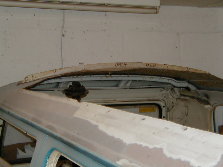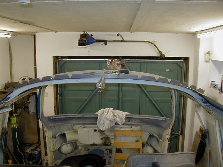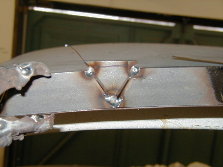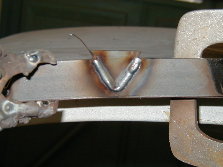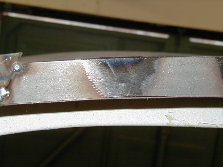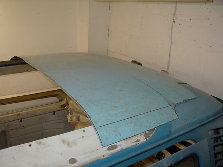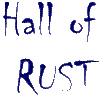Because the front rollover loop is still in place the roof is held in the right contour, which means the frame, which is a genuine frame isn't curved enough, so there are gaps at the ends of the frame. The only way I could see to sort this out was to make my own frame and fill in the gaps with sections of another roof. I had already managed to get another roof from a bloke who was breaking his camper, so I decided to get some angle iron and try and make a frame up. And it wasn't that hard.
The angle iron I used is "Bright" as apposed to black angle and I got it from the local fabricators who cut it to size for me. You cant just simple bend angle to the right shape so I decided to cut little V's out of it as show in the above picture then bent it to the right shape. Then I clamped it to the roof just behind the front roll-over loop and welded small V's back in to the gaps. One thing that is worth pointing out if you decide to make your own frame is that if you do it this way then make the frame more curved then it has to be. Because when you weld in the V's the frame will straighten a bit!
